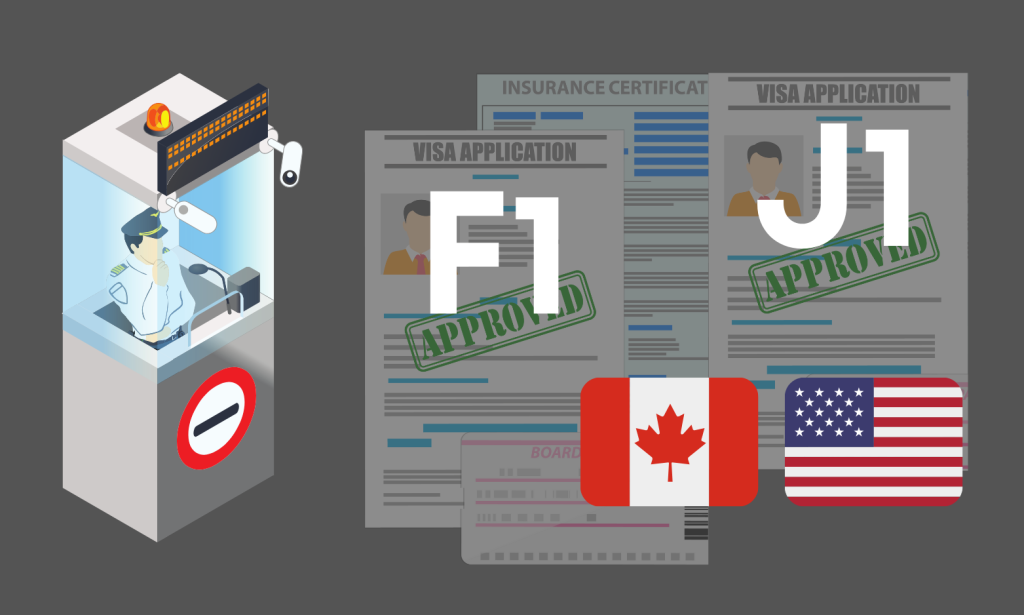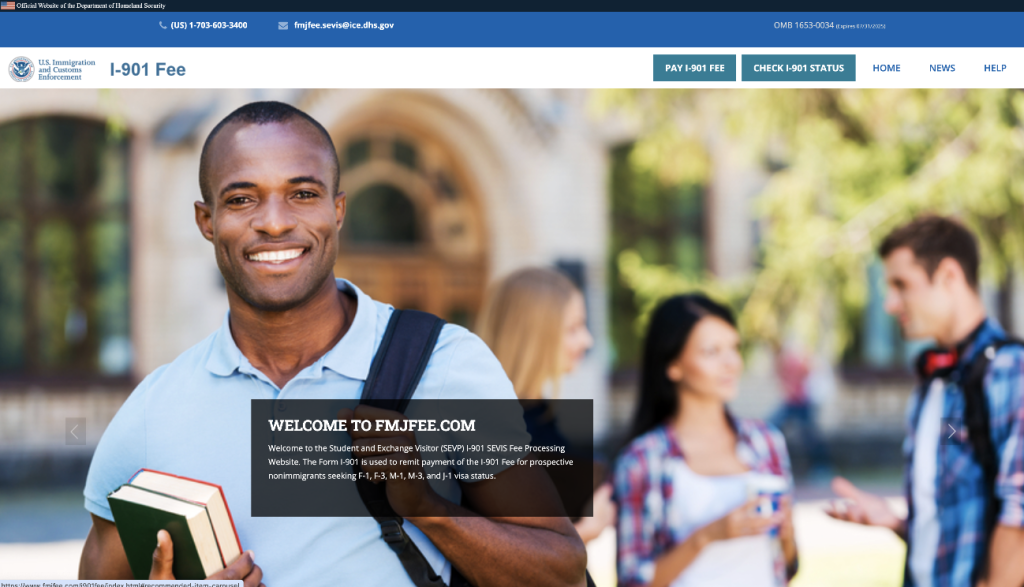
Navigating the world of visas can be one of the most confusing parts of attending college or medical school in the United States. There seems to be an almost endless list of different types of visas; some require prior application and approval, and others only require presenting some paperwork at the border. To further complicate matters, there are additional restrictions when it comes to being allowed to work and what your dependents can and cannot do.
The two types of visas you’ll experience as a US college student, medical student and/or resident are the F1 visa and the J1 visa.
The F1 Visa
The F1 visa is the most common type of visa for college and medical school – so common in fact that there’s an entire community of mentors for international pre-medical students called “F1 Doctors”. The F1 is essentially the “default” student visa, and exceptionally easy for Canadians to get.
There’s essentially no application process – For Canadians, the F1 isn’t actually a visa that you have to apply for, interview and be approved for. Instead, it’s a ‘visa status’ much like the B1/B2 visa status that Canadians enter the United States under when visiting for business or leisure. You simply present yourself at the border, inform the border agent that you’re a student and entering under F1 status and hand over a few forms (which we’ll get to shortly).
You are not permitted to work – One of the biggest restrictions of this visa is that you are not permitted to work, with very few exceptions. You may work on-campus (part-time) during your first year; in following years you may be able to work off-campus but only in your field of study and subject to approval.
You can bring dependents, but they cannot work – This restriction can be the most difficult to deal with if you’re married or have a partner that wants to join you in the United States. While you will be permitted to bring them under F2 status (a dependent to your F1 status), they are not permitted to work. They may study part-time, but not full time and again – they are not permitted to work, with no exceptions. Similarly, it is not permitted to work remotely for a Canadian company while physically located in the United States while under this dependent F2 status.
The F1 Visa Process
The first step of getting an F1 visa is gaining acceptance to a full-time program at an accredited University or Medical School in the United States. Your visa status is only valid for this specific University or Medical School.
Request and receive your I-20 form from your Medical School / University.
The I-20 is a form is issued by your institution; it includes information such the cost of attendance as well as your funding sources. Your institution will request funding information from you prior to their issuance of the I-20 – such as a line-of-credit, bank account balance, or student loans – to prove that you will be able to afford to attend the school and not be a burden on the US taxpayer.
You will be required to present your I-20 form at every border crossing, so keep it safe. Formerly, this was mailed as a physical form but more recently (likely due to the pandemic) emailed and printed forms are permitted.
Note that some border agents may not be clear on this. At one border crossing, I had a border agent question whether the form was ‘the original’ – he may have been unaware of the change and that e-issued I-20s were now permitted. I politely explained that the school issued them by e-mail and it was the original in the sense that I had printed and signed it. He seemed to accept my explanation and I had no further issues – I haven’t had any issue since on dozens of border crossings as an F1.
Once you receive the form, sign it and keep it somewhere safe. I personally keep mine in my passport holder. If you don’t have one, I’d highly recommend getting one to keep your visa papers organized and easily accessible at the border.
Pay Your SEVIS Fee
Once you’ve been issued your I-20, the next step is to pay your SEVIS fee (known as an I-901 fee, just to add more complicated names to the whole process). This is a one-time ‘administrative fee’ that is required for entry – don’t forget to pay it! The online portal to pay the fee – FMJFEE.com – seems slightly suspicious, but it is indeed the real deal.

You only have to pay this fee once; it’s associated with your SEVIS ID, which is a series of numbers that the US government uses to identify you as a student.
As shown below, you enter your SEVIS ID (found on the I-20 issued by your medical school or university) enter your ID, birthdate and first and last name. Then, you’ll be able to pay your SEVIS fee – it’s $350USD at time of writing (March 2023).
Your SEVIS / I-901 Fee can be paid by entering your SEVIS ID along with your name and birthday.
Prepare Supporting Documents
For Canadians, that’s it! We’re incredibly fortunate to not have to go through a number of other costly and time-intensive steps that citizens of other countries have to – such as a visa fee, and preparing, scheduling and attending a visa interview.
There are still a few more things you can do to be extra prepared at the border; I carry the following documents with me at every crossing (though have not needed to show them to date, after dozens of border crossings).
- Acceptance Letter from my Medical School
- Financial Aid Award Letter from my Medical School
- Recent Bank Statement
- Line-of-Credit Approval Letter
- Student ID
The F1 Visa in Summary
The F1 visa is the visa status that most Canadian pre-medical and medical students use to study in the United States. It will be the visa your institution is most familiar with, and will come with the fewest hoops to jump through in order to enter America under the status. The biggest restriction of the F1 visa is the inability for your spouse or dependents to work in the United States – without exception. In limited situations, a different visa called the J1 visa is possible for Medical Students. This visa does allow dependents to work with permission – we’ll have an article up about that in the coming months.
Otherwise, the F1 visa is a wonderful option for most medical students, allowing Canadians accepted to Medical School or University in the United States to easily and cheaply work towards their US MD degree.
